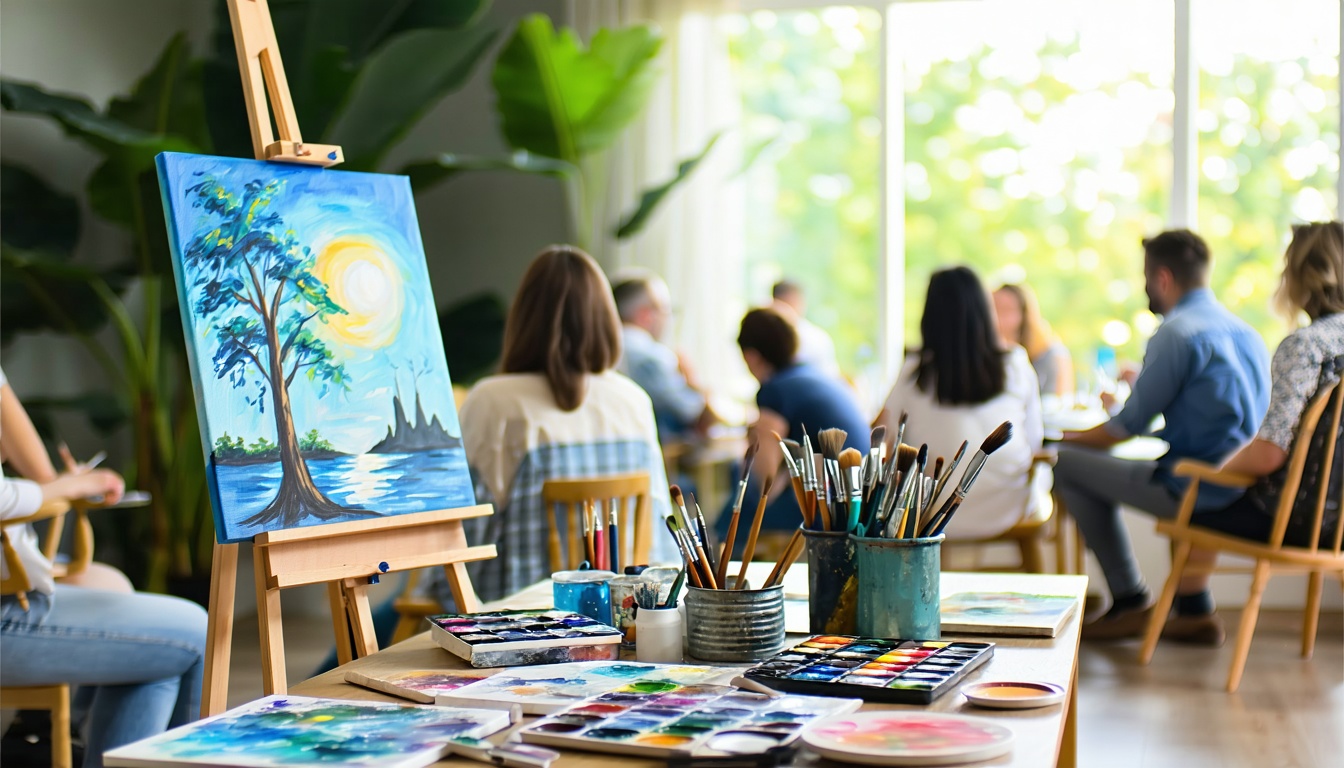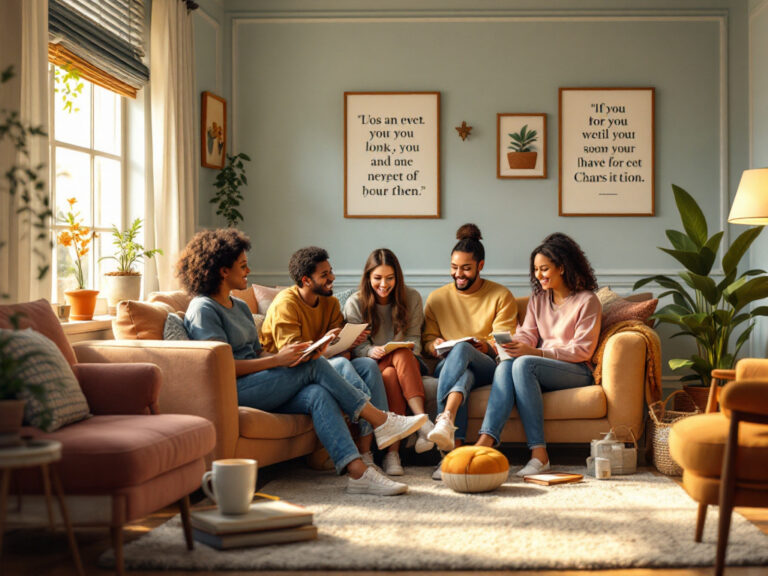Discover rehab with art therapy
Embarking on rehab with art therapy can offer you fresh ways to understand, process, and ultimately overcome substance use challenges. By using creative expression, you can channel complex emotions and work through issues that may be difficult to address in traditional talk therapy alone. At Kemah Palms, we recognize that addiction recovery involves the mind, body, and spirit, and we strive to offer you the support necessary for lasting recovery. Our industry-leading drug and alcohol addiction treatment program integrates art therapy as one of several evidence-based approaches to ensure you or your loved one receives the comprehensive care needed for true healing.
Art therapy is backed by research indicating that engaging in creative artwork helps reduce stress, anxiety, and the severity of mental health symptoms [1]. When you combine rehab with art therapy at Kemah Palms, you have the opportunity to benefit from a person-centered approach that includes emotional, social, physical, and spiritual components of healing. The blend of art-making with professional guidance ensures you do not feel isolated in your journey.
Below, you will discover how art therapy works, the role it plays in addiction treatment, and why Kemah Palms stands out as a leader in providing a tailored treatment program aligned with your unique challenges.
Understand the power of artistic expression
Artistic expression has long been a powerful means of communicating complex thoughts and emotions. Whether through painting, sculpting, collage-making, or drawing, creative endeavors can capture experiences that might otherwise remain unspoken. In the context of substance abuse recovery, engaging in these art forms offers more than mere aesthetic value. It can be a critical element of your therapeutic process, helping you explore the factors that led to addiction while fostering resilience as you move forward.
How creative arts help your recovery
When you choose rehab with art therapy, you begin to engage parts of your brain associated with imagery, perception, and symbol-making. This process connects emotional regulation centers in ways that purely verbal therapies might not. Art therapy has been shown to reduce anxiety, alleviate symptoms of depression, and boost self-esteem [2].
Some ways art therapy supports your recovery might include:
- Strengthening emotional awareness through visual representation
- Creating a safe outlet for releasing pent-up feelings
- Providing a sense of personal achievement through completed artwork
- Enhancing confidence in your capacity to heal and change
These benefits often complement other established approaches, such as cognitive behavioral therapy for addiction, enabling you to address both the physiological and psychological aspects of substance use disorders.
Emotional release and self-discovery
In a traditional therapy setting, you might struggle to put your experiences or traumas into words, or you may feel guarded about revealing vulnerabilities. Through paintings, sketches, or collages, you can convey these concerns more freely. Art therapy takes you beyond the realm of speech, providing:
- Nonverbal channels for expressing anger, grief, or fear
- Insights into unconscious patterns persisting from past events
- Encouragement to test out new perspectives in a low-risk environment
When art therapists facilitate group sessions, you can also benefit from peer support, camaraderie, and shared insights. These lively discussions of one another’s artwork often illuminate shared journeys and equip you with added motivation as you progress toward sobriety.
Choose Kemah Palms for tailored support
At Kemah Palms, we appreciate that addiction recovery is not a one-size-fits-all endeavor. Your history, medical background, personal challenges, and emotional triggers differ from others. Our industry-leading drug and alcohol addiction treatment program—enhanced with rehab with art therapy—ensures that each step of your healing journey remains highly personalized. Our caring team focuses on giving you the support necessary for lasting recovery through a range of evidence-based services.
Our commitment to comprehensive care
We believe you deserve more than a narrow approach to treatment. That is why our facility integrates multiple therapy modalities, including:
- Art therapy sessions guided by trained professionals
- Behavioral interventions such as cognitive-behavioral therapy
- Personalized sessions at our inpatient rehab center for structured, round-the-clock support
- Workshops that apply mindfulness techniques like yoga and meditation
Such diversity in programs allows you to select combinations that work best for your life circumstances. For some, tying in a holistic rehab program is vital if they are looking to address their emotional and spiritual needs. For others, addressing co-occurring conditions at a dual diagnosis treatment center might be essential for meaningful progress. No matter your unique challenges, Kemah Palms offers an environment shaped by empathy, expertise, and a dedication to your overall well-being.
Empowering your individuality
One of the strengths of art therapy is its versatility. Different individuals may forge distinct paths to healing through various creative techniques. While painting might appeal to some, others might prefer sculpting or photography. At Kemah Palms, our counselors and art therapists are trained to encourage you to explore the artistic modality that resonates. This person-centered approach is designed to motivate:
- Positive self-expression, particularly in times of stress
- Deeper self-awareness regarding root causes of addiction
- A renewed sense of curiosity and wonder toward your own capabilities
We maintain a supportive environment, so if you are worried about “not being artistic,” you can rest assured: the aim is to explore, not to produce flawless results.
Benefits beyond words
Data-driven studies cite art therapy’s effectiveness for diverse mental health concerns, from depression and anxiety to post-traumatic stress and cognitive impairments [1]. Through rehab with art therapy, you receive a platform to delve into your recovery in a less intimidating, more liberating manner.
Reduce stress and anxiety
Addiction feed off states of distress, and the triggers of stress can be both physical and emotional. Art therapy’s structured yet flexible process helps you harness the calming potential of creativity, reducing the intensity of unsettling emotions like worry, fear, or restlessness. Here is how it can help:
- Soothing environment: Working with calming colors and textures can lower anxious arousal.
- Mindful focus: When you immerse yourself in artistic endeavors, your mind can temporarily release negative ruminations.
- Sense of accomplishment: Completing a piece of creative work can inspire renewed confidence.
As you acquire these newfound coping mechanisms, they can be easily integrated into other approaches, such as family therapy addiction or relapse prevention strategies.
Foster emotional resilience
Emotional resilience, the capacity to adapt when confronted with hardship, plays an enormous role in preventing relapse. By engaging in a regular art therapy practice:
- You can experiment with healthy perspective shifts.
- You learn to tolerate frustration, mistakes, and imperfections.
- You discover that personal growth can emerge from adversity.
The habit of translating difficult emotions onto paper “externalizes” them, helping you stand at a more objective vantage point. This technique can be extremely powerful, particularly for individuals dealing with deep-rooted guilt, shame, or trauma. Having our therapists guide you in interpreting your artwork can further deepen your insights and strengthen your resolve to continue on the path to sobriety.
Boost communication and self-expression
Art therapy is valuable because it lets you tackle the limitations of language. Sometimes, you might simply not know the right words to articulate a past trauma, or you might struggle to say them. Artistic activities can fill in these gaps by allowing you to tell your story through images, shapes, or designs. This alternative avenue for self-expression often results in more honest dialogues during counseling sessions. You may subsequently uncover underlying issues that conventional conversation alone did not reveal.
Table: Key benefits of art therapy in addiction recovery
| Benefit | Description |
|---|---|
| Emotional Release | Offers a constructive outlet for pent-up or unspoken feelings |
| Anxiety Reduction | Encourages mindful immersion that calms runaway stress responses |
| Self-Discovery | Helps identify and clarify underlying triggers or personal strengths |
| Personal Achievement | Builds your self-esteem through completing creative projects |
| Enhanced Communication | Bridges gaps when words falter, improving therapeutic progress |
| Resilience Building | Equips you with healthy stress-management tools that reduce chances of relapse |
Integrate art therapy with additional treatments
No two people share the exact same journey through addiction. Many benefit from integrating art therapy with more traditional or evidence-based practices. This multi-pronged approach respects your individuality, ensuring you harness every available resource.
Combining art with behavioral therapies
Engaging in a structured talk therapy format—like cognitive-behavioral therapy—often runs in parallel with art therapy. Once you visually depict your experiences or feelings, you might be more prepared to analyze them verbally, adjusting negative thought patterns. This synergy can strengthen your will to maintain sobriety and reduce internal barriers to healing.
Additionally, if you face co-occurring mental health disorders, combining rehab with art therapy and advanced modalities like trauma therapy for addiction amplifies your overall treatment success. The integrative, person-centered aspect of these programs is designed to meet multiple layers of need.
Holistic healing opportunities
Because addiction impacts well-being in numerous ways, a well-rounded program often includes mindfulness practices, yoga, meditation, or nature walks. These strategies, paired with art therapy, help you:
- Develop healthier stress responses
- Strengthen intuition about what your mind and body require
- Improve attention span and concentration
By uniting these approaches, you equip yourself with a more diverse treatment toolkit. As a result, you hold a stronger basis for resilience and are better positioned to guard against relapse once you leave a structured treatment setting.
Your journey at Kemah Palms
At Kemah Palms, we take pride in the fact that our facilities and professionals create a safe, judgment-free atmosphere. We encourage you to connect with your creative side, even if you have never considered yourself artistic. Our team commits to guiding you through every step, shaping a treatment path that addresses your physical, emotional, and social well-being.
Personalized assessment and planning
Everyone arrives at rehab with art therapy carrying different life experiences. Early in your stay, you undergo an in-depth assessment, which may include:
- Medical and psychological evaluations
- Substance use history analysis
- Discussions about personal goals and motivations
Using the insights gleaned from these evaluations, we craft individualized plans. Multiple factors—such as the substance involved, the extent of use, underlying mental health issues, and personal preferences—are considered. This ensures your treatment aligns with your current needs and aspirations.
Professional support at every stage
During your time with us, you will have access to licensed art therapists, medical professionals, and addiction counselors. They collaborate to ensure your well-being and growth remain top priorities. You can expect:
- One-on-one art therapy sessions for private exploration
- Group sessions that foster communal support and shared learning
- Skill-building workshops oriented toward coping strategies and relapse prevention
- Access to structured programs such as the residential treatment center if you need intensive, round-the-clock care
Our overarching objective is to give you the supportive environment you need to uncover your strengths, redefine your identity beyond substance use, and develop healthier patterns that can sustain you long after you leave our facility.
Continual growth and aftercare
As you complete your initial therapy, your journey is far from over. Continued engagement in recovery-related activities, whether through extended outpatient services or transitional living, is hugely beneficial. Art therapy can be a staple in your long-term recovery plan, offering you a consistent means of self-expression and stress management.
You may benefit from aftercare planning services, which lay out practical steps for life beyond treatment. These might include:
- Locating local art classes, support groups, or therapy studios
- Organizing routine check-ups and counseling sessions
- Connecting you with community-based initiatives that help sustain sobriety
By maintaining your engagement in creative outlets, there is a greater chance you will experience ongoing emotional balance, thus reducing the risk of relapse.
Healing emotions through expressive arts
While art therapy specifically deals with visual arts, expressive arts therapy broadens the creative horizon to include dance, music, drama, or poetry [3]. If you discover that painting alone does not resonate, you might find music therapy or dance to be effective means to reach the same emotional breakthroughs. Recognizing these alternatives helps you avoid feeling stuck in a single approach.
Key differences between art therapy and expressive arts
- Modalities: Art therapy focuses on outlets like painting, collage, sculpting, and drawing. Expressive arts therapy may combine multiple art forms, including music, movement, or drama.
- Benefits: Both methods emphasize mental clarity, reduced stress, and insight into emotional struggles.
- Adaptability: Expressive arts might resonate more strongly with those who prefer music or movement.
At Kemah Palms, we strive to present opportunities for creative expression in ways that best match your preferences, reinforcing the idea that there are multiple paths leading to self-discovery and symptom relief.
Overcoming barriers to creativity
At times, the notion of picking up a paintbrush can be intimidating. Perfectionistic tendencies, fear of judgment, and long-held beliefs about lacking artistic skill all come to the forefront. Yet understanding that the goal is not flawless art can help you move past these reservations. Art therapy aims to unlock emotions and bring forward healing insights rather than produce museum-worthy pieces.
Some of the common barriers—and ways to move beyond them—include:
- Fear of failure: Remember that your artwork is confidential in the therapy space, shared only if you choose. Allowing yourself to make mistakes can be liberating and cathartic.
- Doubts about skill level: Art therapy’s focus on the personal journey eliminates any concern for aesthetic perfection.
- Emotional discomfort: It is natural to encounter raw or unsettling emotions during creation. Professionals trained in trauma-focused therapy can guide you to process distress without being overwhelmed.
Such barriers often fade once you experience the relief of self-expression. Many discover that releasing internal tension in the form of color, texture, or shape becomes a direct pathway toward personal growth.
How art therapy transforms addiction treatment
Substance use can stem from emotional isolation, unresolved trauma, or difficulties in dealing with stress. When you engage in rehab with art therapy, you develop practical skills for addressing these root causes. You will discover the capacity to name and tame intense emotions and recast them in a format less likely to harm your well-being.
Building resilience for long-term success
Recovery unfolds in stages. Early treatments might address withdrawal or stabilization, followed by deeper exploration of your motivations and underlying stressors. Art therapy supports your entire healing trajectory:
- Initial stages: Gentle art activities can be calming, a positive way to ground yourself if you feel anxious or uneasy about treatment.
- Mid-stages: By this point, you may be exploring deeper guilt, trauma, or regrets. Artwork can make hidden conflicts “visible,” fueling breakthroughs that continue in counseling.
- Transitioning back into daily life: You acquire valuable coping skills—like using quick sketches to name your emotions—so that you can adapt to triggers without resorting to old habits.
A sense of purpose and accomplishment
Many individuals grappling with addiction indicate that they lose sight of personal goals or passions. By creating art, you can reclaim that sense of purpose, watching a painting or a piece of sculpted clay evolve under your hands. Even a small sense of pride in completion can stimulate positive changes in your self-perception. This boost extends beyond the therapy room, driving you to take more consistent steps toward sustained health.
Frequently asked questions
Below are some of the most commonly asked questions by individuals and families considering rehab with art therapy at Kemah Palms. These answers can guide your expectations and help you feel more confident about incorporating a creative approach to your recovery journey.
-
Will I need to have artistic talent?
Not at all. Artistic talent is not a prerequisite. Art therapy focuses on expressing emotions and uncovering insights rather than producing stunning artwork. Your therapist provides guidance, but the personal meaning of your expressions matters far more than polished technique. -
How does art therapy complement other treatments?
Art therapy can work seamlessly alongside methods like behavioral counseling, group therapy, or medication management. Because it is nonverbal, it often allows deeper feelings to surface. You can then carry these discoveries into talk therapy or structured programs like our intensive outpatient treatment or long term rehab program. -
Is art therapy suitable for co-occurring mental health conditions?
Yes. Many individuals dealing with depression, anxiety, PTSD, or other mental health issues find art therapy extremely beneficial. It bridges emotional blockages and can help you articulate experiences without triggering a sense of overwhelm. If co-occurring disorders are part of your diagnosis, you might also benefit from specialized care through our mental health and addiction rehab. -
How frequently will I participate in art therapy sessions?
The frequency can be tailored to your specific needs and treatment plan. Some people engage in art therapy several times a week, while others find weekly sessions beneficial. Your therapist will help you find a schedule that supports steady progress without becoming overwhelming. -
Can art therapy continue after leaving Kemah Palms?
Absolutely. Art therapy can be integrated into aftercare or community-based programs. We encourage you to continue creative activities at home, enroll in local art classes, or meet with an outpatient art therapist. This consistency can be a helpful strategy for self-reflection and maintaining emotional balance.
Take your next step with Kemah Palms
Rehab with art therapy is more than an experimental step—it is a powerful extension of holistic healing that addresses the various layers of addiction. At Kemah Palms, our goal is to make your transition into recovery as seamless and complete as possible. Our industry-leading drug and alcohol addiction treatment center implements art therapy alongside other evidence-based methods, ensuring that each component supports your total well-being.
If you are ready to move forward or would like more information about personalized treatment options, we welcome your call. You do not have to face this journey alone. By exploring the creative dimensions of rehab with art therapy, you open yourself to renewed hope, robust coping skills, and the possibility of a healthier life free from the restraints of addiction. Let your healing journey commence at Kemah Palms—where your individuality, creativity, and dedication converge for lasting transformation.







